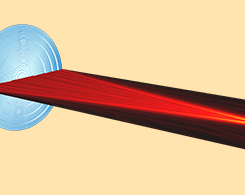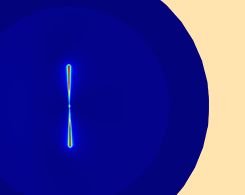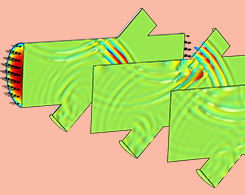Blog Posts Tagged Technical Content

How to Implement the Fourier Transformation from Computed Solutions
In this wave optics demonstration, learn how to implement the Fourier transformation for computed solutions, using the example of an electromagnetic simulation of a Fresnel lens.

How to Model the Electromagnetic Heating of Underground Cables
Underground power cables are beneficial in many ways, but they are also subject to overheating. To design better cables, we can model their electromagnetic heating in COMSOL Multiphysics.

Which Porous Media and Subsurface Flow Interface Should I Use?
We go over a comprehensive selection of porous media and subsurface flow interfaces available to you in the COMSOL® software so that you can find the right choice for your modeling objective.

Electrochemical Impedance Spectroscopy: Experiment, Model, and App
Experience the phenomenon of electrochemical impedance spectroscopy (EIS) in 3 ways: experiment, model, and simulation application.

How and When to Open Recovery Files in COMSOL Multiphysics®
If, by chance, the software shuts down before your simulation converges, just use the Open Recovery File feature to pick up where you left off and find your model’s solution.

Fat-Washing Cocktails on an Industrial Scale
Bacon-flavored vodka? Pecan-infused bourbon? The fat-washing process extracts the flavors from fat and dissolves it into alcohol, and it can even be scaled up to an industrial level.

How to Couple a Full-Wave Simulation to a Ray-Tracing Simulation
Learn how to couple full-wave and ray-tracing simulations in a model with a nonhomogenous domain around the antenna. Part 4 of a series on multiscale modeling in high-frequency electromagnetics.

Using the Discontinuous Galerkin Method to Model Linear Ultrasound
You can easily model acoustically large problems, like linear ultrasound, with a predefined physics interface that uses a memory-efficient approach called the discontinuous Galerkin method.
